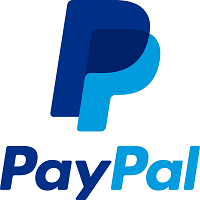
PayPal
View Brand PublisherHow cashless transactions are defining the way forward for travel
Who doesn’t want a seamless Uber-like experience when it comes to travel? Welcome to cashless trips and vacations!
Cashless transactions are fast becoming the preferred choice of payment for travellers worldwide. With the post-pandemic world seeing a boom in what is coined as ‘revenge travel’, travellers from across the world and specially emerging markets like India have shown a considerable increase in their expenditure on vacations.
Unlike the times when travelling overseas involved the ritual of obtaining local currency, cashless transactions are now the go-to method for payments. To throw more light on the opportunities and avenues of growth in this aspect, and YourStory hosted a panel discussion featuring Chandni Nihalani, Director, PayPal India; Aditya Agarwal, CFO, ; Sukhmani Singh, Head- Strategy and Special Projects, Vacation Homes, Europe; and Amit Madhan, President and Group Head - Technology and e-business, Thomas Cook (India) and SOTC.
Around the world, in no cash
Strict lockdowns during COVID have led to people getting used to transacting online. This behavioural shift has resulted in a stronger need to move to cashless payments. The recent past has seen the travel industry accommodate the preferred tools of payment, not credit cards and debit cards, but digital wallets and UPI. “From the local grocery store to the last mile service provider, everyone was suddenly accepting all those modes of payment. It was nice to see the industry and consumer working in tandem, where the industry was meeting consumer expectations because of behavioural shifts,” said Oyo’s Sukhmani.
Cashless payments through UPI and QR codes are not just convenient but also provide ease of visibility with respect to payment trail, along with various other features accessible with a single click. “Everything that was missing in the cash environment, like keeping the entire repository and making a note of the payment trail, was now available on a mobile app. I think that changed the way consumers started making payments,” explained Amit.
While the pandemic resulted in massive disruption and dislocation in the travel industry, it also brought to focus some customer pain points. Cleartrip’s Aditya shared how the company managed to turn some of the challenges into opportunities. “During the pandemic, customers were looking for fast refunds and flexible options in terms of amendments and cancellations. And we've leveraged that opportunity by providing solutions to consumers to address these pain points,” he said.
Top travel trends
As consumers get more comfortable with contactless or cashless payments, organisations are trying their best to ensure a seamless experience and are in tune with the importance of constantly changing processes to meet consumer demands.
‘Buy Now Pay Later’ seems to be the number one trend currently in the travel sector and the industry is adopting it rapidly. “With PayPal, Buy Now Pay Later has seen a lot of acceptance, as we already have about 18 million customers using this payment option to remove the stress of paying a big ticket item all at once. This enables people to fulfil their dreams and go for that once-in-a-lifetime vacation, which otherwise seems very expensive,” shared Chandni.
The panellists also spoke about other key payment trends for travel such as the widespread adoption of QR codes and interoperability of payment systems.
The travel industry is coming together to constantly innovate on safety, security, and ease of payment systems. This has not only made sure the traveller feels safe but has also helped in building trust between the travel merchant and the traveller.







